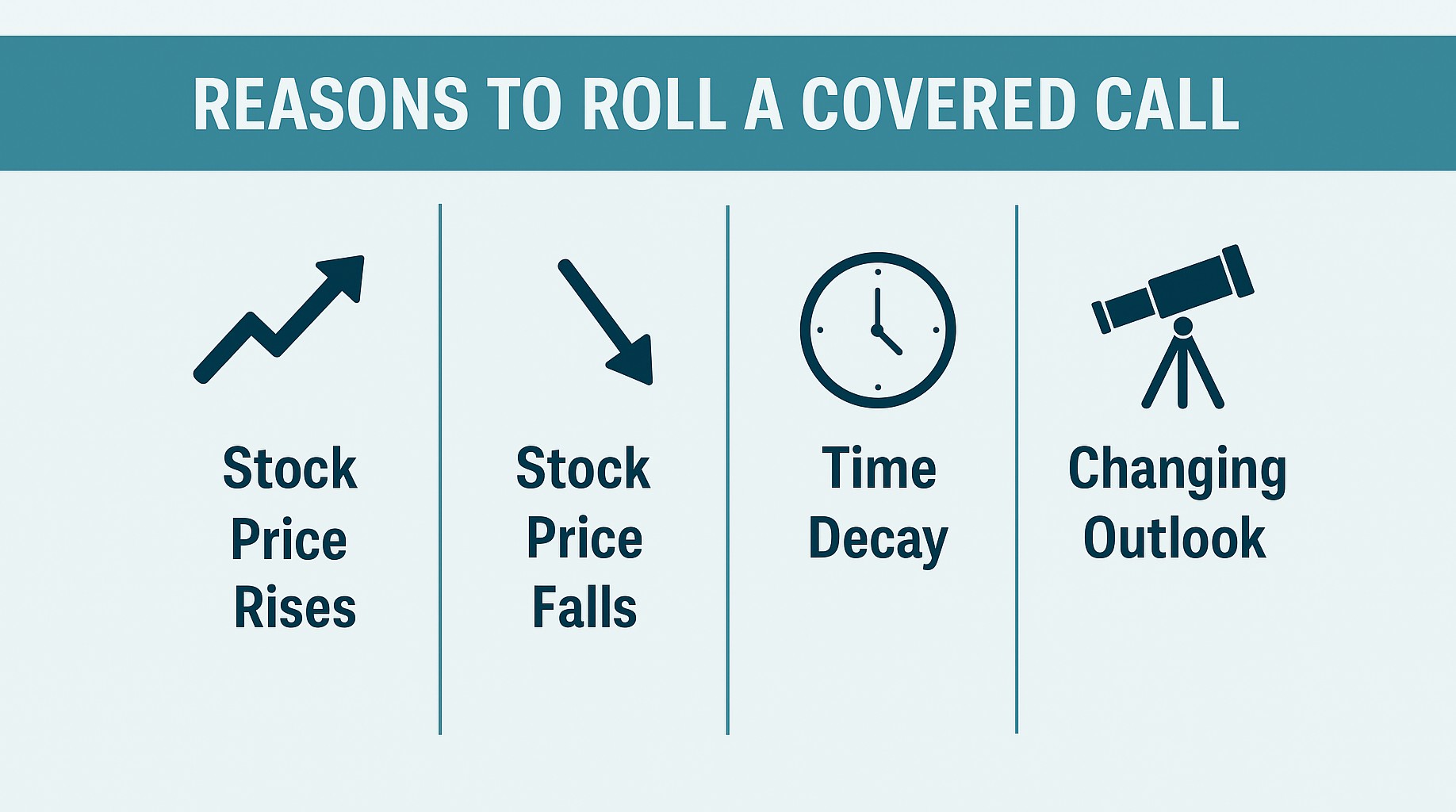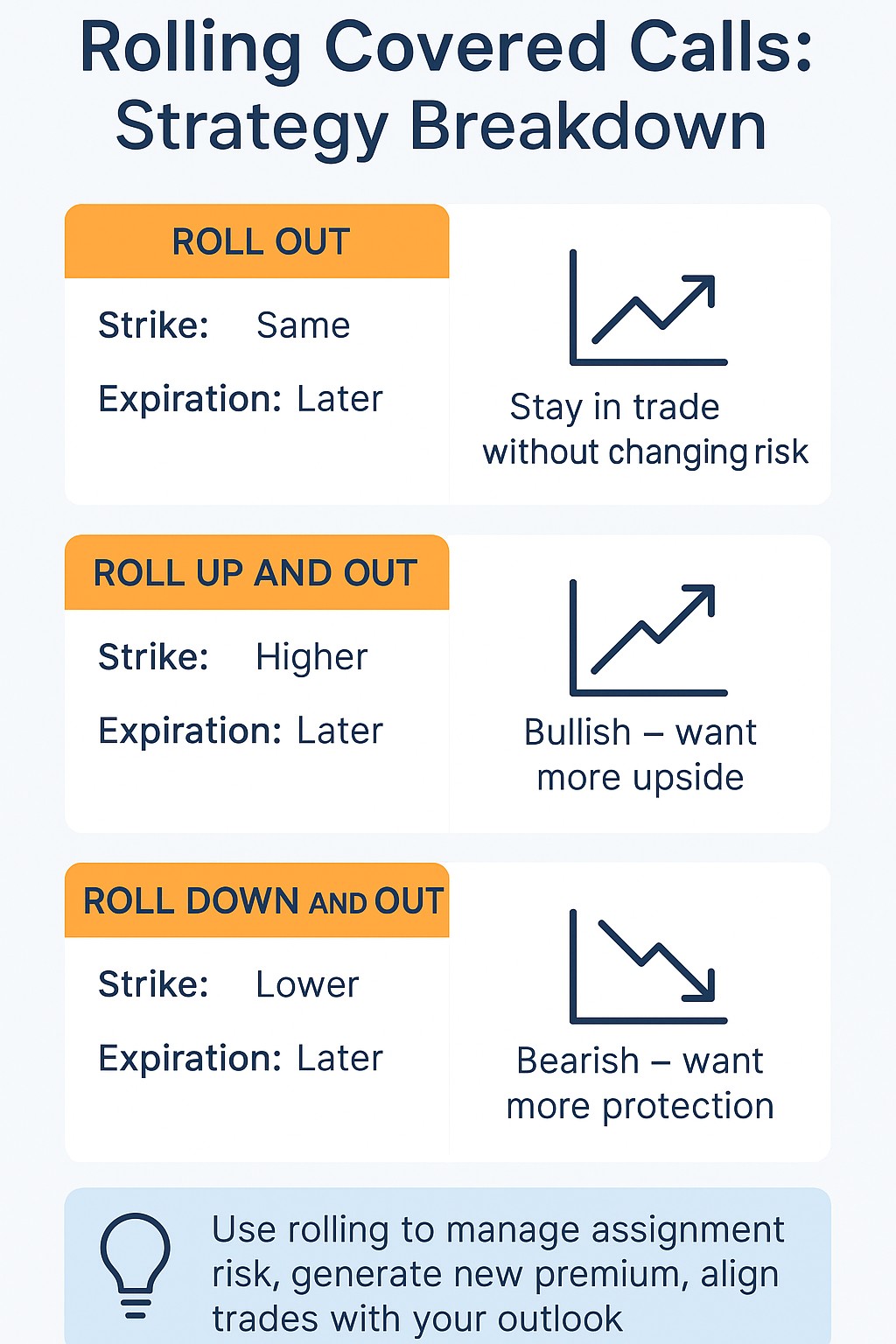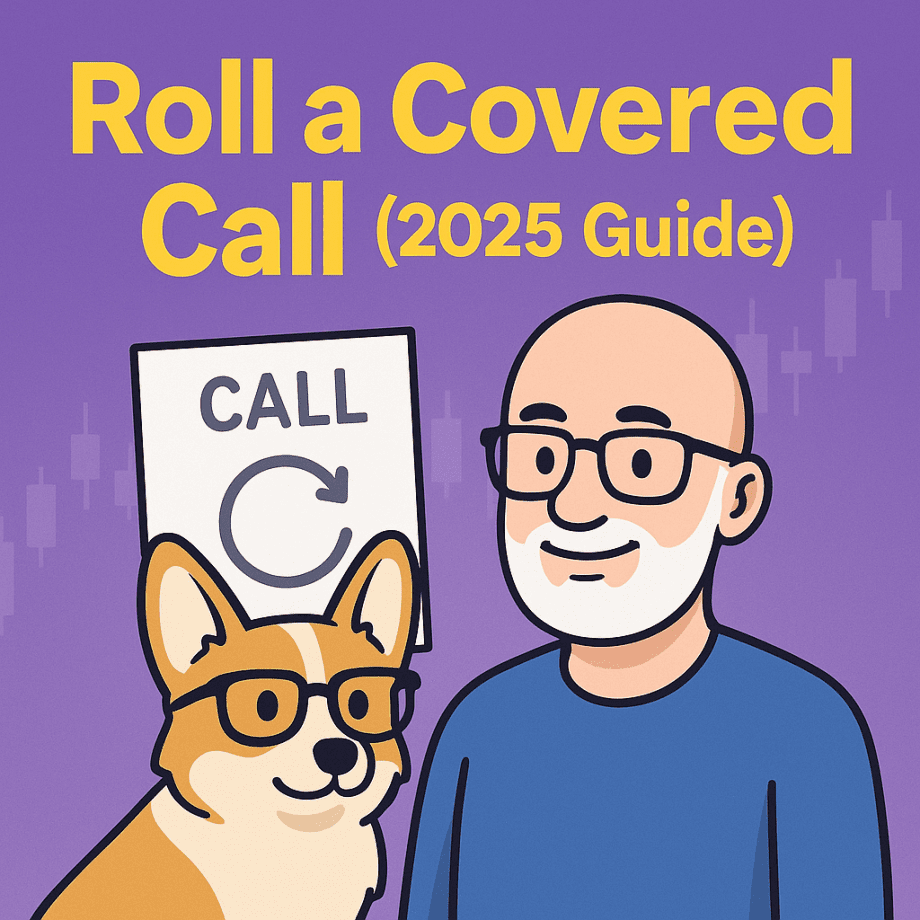Roll a covered call to manage risk, extend premium income, and avoid unwanted assignment. This 2025 guide shows exactly when to roll, why traders choose to roll, and how to execute roll-outs, roll-ups, and roll-downs with clear steps, real examples, and FAQs.
TL;DR — Quick Answer:
Roll a covered call when delta climbs to around 0.55–0.65 or time value shrinks below 10–15% of the option’s price. Both signal capped upside and rising assignment risk.
Many traders roll ~30–45 days out and choose a new short call with a delta of about 0.15–0.35 (roughly 1–2 strikes OTM on liquid stocks) to balance income and room for upside.
📌 Introduction
Rolling covered calls is a flexible strategy used by options traders to manage risk, avoid unwanted assignment, and continue generating income. In this updated 2025 guide, we’ll cover:
- What it means to roll a covered call
- When rolling makes sense
- How to roll: up, down, or out
- What to do with deep in-the-money calls
- How rolling fits into your passive income plan
If you’d like to explore other income strategies, check out our guide to covered call ETFs.
—🎥 Prefer Video?
Watch my short video that explains when and why to roll a covered call, then continue reading below for updated 2025 examples and deeper insights.
📺 Want more trading strategies and walkthroughs? Subscribe to my Renko Trading Channel on YouTube for weekly videos on Renko charts, covered calls, and options strategies.
—💡 What Does It Mean to Roll a Covered Call?
Rolling means closing your existing call and opening a new one—usually with a different strike, expiration, or both. Traders roll to extend time, collect more premium, or adjust for market changes. It’s like renewing a parking meter: you close the old ticket before it expires and print a fresh one.
—⏰ When Should You Roll a Covered Call?
- Before Expiration: The option is nearing expiry and you want to maintain the position and keep income flowing.
- Approaching ITM: Short call delta climbing toward 0.55–0.65 (assignment risk rising).
- Extrinsic Value Is Thin: Time value down to about 10–15% of the option price—there’s little left to collect.
- Market Outlook Changes: Roll up, down, or out to adjust your risk/reward. Tools like Renko chart signals can help with timing decisions.

✅ Why Traders Roll Covered Calls
- Income Extension: Keep collecting premium while holding the stock.
- Avoiding Assignment: Retain shares you want to keep.
- Adjust Strikes: Raise for more upside, lower for more income.
- Flexibility: Adapt to earnings, volatility, or macro events.
📊 Real 2025 Example: Rolling AAPL
Suppose you sold a $210 call expiring Friday. By Wednesday, AAPL trades at $214—your call is ITM.
Roll out & up: Buy back the $210 call and sell a $215 strike for next month (~30–45 DTE). This reduces immediate assignment risk and adds time premium. Whether the roll is a net credit or debit depends on implied volatility and strikes chosen—always check the net before placing the order.
—⚖️ Risks of Rolling
- Net debit risk: It can cost more to close than you earn on the new call.
- Liquidity & spreads: Wider bid/ask spreads can eat into returns—stick to liquid tickers/expirations.
- Downside moves: If the stock drops after rolling, you may have locked in a less favorable strike.
- Tax considerations: Rolling changes option P/L recognition, and assignment triggers a stock sale. This is educational content—consult a tax professional for personal advice.
📝 Step-by-Step: How to Roll a Covered Call
- Assess the current short call: ITM/OTM, days to expiry, extrinsic value, upcoming ex-dividend?
- Define your goal: Avoid assignment, collect more premium, or adjust strikes.
- Choose new terms: Many aim for ~30–45 DTE and a new short call with ~0.15–0.35 delta (1–2 strikes OTM on liquid names).
- Enter as a single roll order: “Buy to close” + “Sell to open” as one ticket to reduce slippage.
- Verify the net: Credit vs debit, breakeven impact, and assignment risk.

💰 Rolling Deep In-the-Money Covered Calls
Deep ITM typically means the short call has a delta of about ≥0.80. Rolling these can help defer assignment, preserve dividends, and continue premium income. For related approaches, see our dividend income strategies.
| Strategy | Strike Price | Premium Collected | Upside Potential | Use Case |
|---|---|---|---|---|
| Roll Out | Same | Moderate | None (cap unchanged) | Extend trade |
| Roll Up & Out | Higher | Lower | Higher | Bullish outlook |
| Roll Down & Out | Lower | Higher | Lower | Bearish/cautious |
| Roll DITM | Much Lower | Highest | Very limited | Max downside protection / retain shares |
📚 Final Thoughts
Rolling covered calls isn’t something you must always do. It’s a tactical tool best used when it fits your goals—whether that’s income, risk management, or flexibility. Done thoughtfully, it can turn a defensive move into a proactive income strategy.
If you’re ready to go deeper, explore our advanced Renko strategies for next-level trading approaches.
